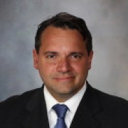Natural history of brain capillary vascular malformations in hereditary hemorrhagic telangiectasia patients.
Paraules clau
Resum
OBJECTIVE
Brain capillary vascular malformations (CVMs) are known to occur with relatively high frequency in hereditary hemorrhagic telangiectasia (HHT) patients. These lesions are thought to have a benign natural history but this has not been systematically studied. The purpose of our study was to examine the natural history of CVMs in a consecutive series of HHT patients.
METHODS
Consecutive patients with untreated CVMs receiving serial imaging were included. Baseline data including demographics, HHT gene mutations, and Curacao diagnostic criteria were collected. The primary outcome was rupture on follow-up. A secondary outcome was new focal neurological deficit or seizure related to the lesion.
RESULTS
22 patients with 42 CVMs were included. Mean age was 45.9±16.9 years. 18 patients (81.8%) were women and 4 (18.2%) were men. 19 patients (86.4%) had definite HHT and 3 patients (13.6%) had probable HHT. Mean follow-up was 4.6±3.7 years. There were a total of 100.2 patient years of follow-up and 222.5 lesion years. No lesions ruptured on follow-up and no patient had focal neurological deficits or seizures related to the lesions.
CONCLUSIONS
Our study found that CVMs in HHT patients have a benign natural history as no patients had hemorrhage or other symptoms related to these lesions. These findings should be confirmed in additional multicenter longitudinal studies.


